Helicopter Blade-Vortex Interaction Airload and Noise Prediction Using Coupling CFD/VWM Method
Abstract
:1. Introduction
2. Computational Method
2.1. Aerodynamic Model
2.1.1. Navier-Stokes Solver
2.1.2. Viscous Wake Model
2.1.3. Coupling Algorithm
2.2. Acoustic Model
3. Results and Discussions
3.1. Numerical Setup
3.2. Analysis of BVI Airload and Noise
3.3. Sensitivity Study of BVI Noise
3.3.1. Tip-Path-Plane Angle
3.3.2. Thrust Coefficient
3.3.3. Tip Mach Number
3.3.4. Advance Ratio
4. Conclusions
- (1)
- The rotor wake is an important parameter that contributes to the accuracy of BVI noise prediction. Compared with the CFD/FW-H method, the hybrid CFD/VWM/FW-H method predicts a more accurate rotor wake and the impulsive sound pressure agrees better with the available test data. The hybrid method is also capable of reducing the computation time and resources, given that the computation time is about one-seventh of the CFD/FW-H method.
- (2)
- Variation in the tip-path-plane angle changes the miss-distance, affecting the BVI noise. In a strong BVI state, BVI noise is dominated by the parallel interaction #A3 that radiates to 120° in azimuth and 45° below the rotor plane. With the rotor disk tilted forward, BVI noise becomes weaker, and even disappears due to the reduction in the parallel interaction #A3. Meanwhile, the noise intensity decreases with increases in the miss-distance.
- (3)
- Increases in thrust coefficient oppositely impact the vortex strength and miss-distance, which accounts for the little changes in the sound pressure and the peak noise level. However, the radiation direction of the BVI noise moves from around 120° to 200° in azimuth down the rotor as the oblique interaction #A2 becomes stronger and dominates the BVI noise propagation.
- (4)
- Increasing the tip Mach number has little effect on the interaction angle and miss-distance, but greatly increases the noise radiation efficiency and the dynamic pressure on the advancing side, enhancing interactions #A1 and #A2. Therefore, the BVI noise intensity increases and the radiation directions from #A1 and #A2 become the main propagation direction of BVI noise. When the tip Mach number reaches transonic, BVI noise will never dominate the acoustic field in space.
- (5)
- Increases in the advance ratio greatly changes the interaction azimuth and interaction angle such that the interaction locations move backward and interaction #A2 changes to a parallel interaction. Thus BVI noise dominated by the parallel interaction #A2 radiates to around 160° in azimuth down the rotor. Also, the BVI noise intensity increases provided that the angle of the backward tilt is small. When it is not, the increase in the inverse miss-distance reduces the BVI noise.
- (6)
- Reductions in BVI noise can be obtained by increases in the miss-distance of the parallel interaction with the proper tip-path-plane angle and forward speed adjustment or by decreases in the tip Mach number. Decreases or increases in thrust coefficient change only the propagation direction, not its magnitude.
Acknowledgments
Author Contributions
Conflicts of Interest
Notation
| Sound speed, m/s | |
| Lift coefficient of the blade section | |
| .Rotor thrust coefficient | |
| Energy | |
| Inviscid convective flux vector | |
| f = 0 | Equation of the body surface in motion |
| Viscous flux vector | |
| li | Force/unit area on medium |
| Rotor tip Mach number | |
| Mr | Local Mach number in radiation direction |
| Rotor radius | |
| re | Source-to-observation distance |
| ta | Observation time |
| Velocity field | |
| Free stream velocity | |
| Volume of the pth vortex particle | |
| Relative velocity of the blade section | |
| Conserved variables vector | |
| (x, y, z) vortex particle displacement from the rotor hub center | |
| Vorticity strength | |
| Tip-path-plane angle | |
| Rotor bound circulation | |
| Rotor advance ratio | |
| Kinematic viscosity | |
| Air density | |
| Vorticity field | |
| Non-dimensional vorticity magnitude | |
| Hamiltonian operator | |
| p | Particle index |
| Free stream |
References
- Malovrh, B.; Gandhi, F. Sensitivity of Helicopter Blade-Vortex-Interaction Noise and Vibration to Interaction Parameters. J. Aircr. 2005, 42, 685–697. [Google Scholar] [CrossRef]
- Yu, Y.H. Rotor blade–vortex interaction noise. Prog. Aerosp. Sci. 2000, 36, 97–115. [Google Scholar] [CrossRef]
- Boxwell, D.A.; Splettstoesser, W.R.; Schultz, K.J.; Schmitz, F.H. Helicopter Model Rotor-Blade Vortex Interaction Impulsive Noise: Scalability and Parametric Variations. J. Am. Helicopter Soc. 1987, 32, 5–12. [Google Scholar]
- Yu, Y.H.; Tung, C.; Gallman, J.; Schultz, K.J.; van der Wall, B.; Spiegel, P.; Michea, B. Aerodynamics and Acoustics of Rotor Blade-Vortex Interactions: Analysis Capability and its Validation. In Proceedings of the 15th AIAA Aeroacoustics Conference DLR, Long Beach, CA, USA, 25–27 October 1993. [Google Scholar]
- Chung, K. Numerical predictions of rotorcraft un-steady air-loadings and BVI noise by using a time-marching free-wake and acoustic analogy. In Proceedings of the 31st European Rotorcraft Forum, Florence, Italy, 13–15 September 2005. [Google Scholar]
- Wall, B.G.V.D. Extensions of prescribed wake modelling for helicopter rotor BVI noise investigations. CEAS Aeronaut. J. 2012, 3, 93–115. [Google Scholar] [CrossRef]
- Strawn, R.C.; Caradonna, F.X.; Duque, E.P.N. 30 Years of Rotorcraft Computational Fluid Dynamics Research and Development. J. Am. Helicopter Soc. 2006, 51, 5–21. [Google Scholar] [CrossRef]
- Harris, R.E.; Sheta, E.F.; Habchi, S.D. An Efficient Adaptive Cartesian Vorticity Transport Solver for Vortex-Dominated Flows. AIAA Pap. 2010, 48, 2157–2164. [Google Scholar] [CrossRef]
- Yang, A.; Yang, X. Multigrid Acceleration and Chimera Technique for Viscous Flow Past a Hovering Rotor. J. Aircr. 2015, 48, 713–715. [Google Scholar] [CrossRef]
- Lakshminarayan, V.K.; Kalra, T.S.; Baeder, J.D. Detailed Computational Investigation of a Hovering Microscale Rotor in Ground Effect. AIAA J. 2013, 51, 893–909. [Google Scholar] [CrossRef]
- Gennaretti, M.; Bernardini, G. Novel Boundary Integral Formulation for Blade-Vortex Interaction Aerodynamics of Helicopter Rotors. AIAA J. 2007, 45, 1169–1176. [Google Scholar] [CrossRef]
- Dimanlig, A.; Jayaraman, B.; Lim, J.; Wissink, A. Application of adaptive mesh refinement technique in helios to blade-vortex interaction loading and rotor wakes. In Proceedings of the 68th Annual Forum of the American Helicopter Society, Virginia Beach, VA, USA, 1–3 May 2012. [Google Scholar]
- Fogarty, D.E.; Wibur, M.L.; Sekula, M.K.; Boyd, D.D., Jr. Prediction of BVI noise for an active twist rotor using a loosely coupled CFD/CSD method and comparison to experimental data. In Proceedings of the 68th Annual Forum of the American Helicopter Society, Virginia Beach, VA, USA, 1–3 May 2012. [Google Scholar]
- Biava, M.; Bindolino, G.; Vigevano, L. Single blade computations of helicopter rotors in forward flight. In Proceedings of the 41st Aerospace Sciences Meeting & Exhibit, Reno, NV, USA, 6–9 January 2003. [Google Scholar]
- Shi, Y.; Zhao, Q.; Fang, F.; Xu, G. A New Single-blade Based Hybrid CFD Method for Hovering and Forward-flight Rotor Computation. Chin. J. Aeronaut. 2011, 24, 127–135. [Google Scholar] [CrossRef]
- Hamid, F.; Ahmad, R.P. A New Coupled Free Wake-CFD Method for Calculation of Helicopter Rotor Flow-Field in Hover. J. Aerosp. Technol. Manag. 2014, 6, 129–147. [Google Scholar]
- Wie, S.Y.; Im, D.Y.; Kwon, J.H.; Lee, D.J. Numerical Simulation of Rotor Using Coupled Computational Fluid Dynamics and Free Wake. J. Aircr. 2010, 47, 1167–1177. [Google Scholar] [CrossRef]
- Sugiura, M.; Tanabe, Y.; Sugawara, H. Development of a Hybrid Method of CFD and Prescribed Wake Model for Helicopter BVI Noise Prediction. Trans. Jpn. Soc. Aeronaut. Space Sci. 2013, 27, 343–350. [Google Scholar] [CrossRef]
- Inada, Y.; Yang, C.; Iwanaga, N.; Aoyama, T. Efficient Prediction of BVI Noise Using Euler Solver with Wake Model. In Proceedings of the 1st International Forum on Rotorcraft Multidisciplinary Technology, Seoul, Korea, 15–17 October 2007. [Google Scholar]
- Shi, Y.J.; Xu, G.H.; Wei, P. Rotor wake and flow analysis using a coupled Eulerian–Lagrangian method. Eng. Appl. Comput. Fluid Mech. 2016, 10, 386–404. [Google Scholar] [CrossRef]
- Shi, Y.; Xu, Y.; Xu, G.; Wei, P. A coupling VWM/CFD/CSD method for rotor airload prediction. Chin. J. Aeronaut. 2016, 30, 204–215. [Google Scholar] [CrossRef]
- Farassat, F. Derivation of Formulations 1 and 1A of Farassat; NASA Technical Reports Server (NTRS): Hampton, VA, USA, 2007. [Google Scholar]
- Luo, H.; Baum, J.D.; Löhner, R. A Fast, Matrix-free Implicit Method for Computing Low Mach Number Flows on Unstructured Grids. Int. J. Comput. Fluid Dyn. 2000, 14, 133–157. [Google Scholar] [CrossRef]
- Roe, P.L. Approximate Riemann solvers, parameter vectors, and difference schemes. J. Comput. Phys. 1981, 43, 357–372. [Google Scholar] [CrossRef]
- Cottet, G.H.; Koumoutsakos, P.D. Vortex Methods: Theory and Practice; Cambridge University Press: Cambridge, UK, 2000. [Google Scholar]
- Eldredge, J.D.; Leonard, A.; Colonius, T. A general deterministic treatment of derivatives in particle methods. J. Comput. Phys. 2002, 180, 686–709. [Google Scholar] [CrossRef]
- Sim, B.W.; Schmitz, F.H. Acoustic Phasing and Amplification Effects of Single-Rotor Helicopter Blade-Vortex Interactions. In Proceedings of the 55th Annual Forum of the American Helicopter Society, Montreal, QC, Canada, 25–27 May 1999. [Google Scholar]
- Shi, Y.J.; Zhao, Q.J.; Xu, G.H. An Analytical Study of Parametric Effects on Rotor–Vortex Interaction Noise. J. Proc. IMechE G J. Aerosp. Eng. 2011, 225, 259–268. [Google Scholar] [CrossRef]

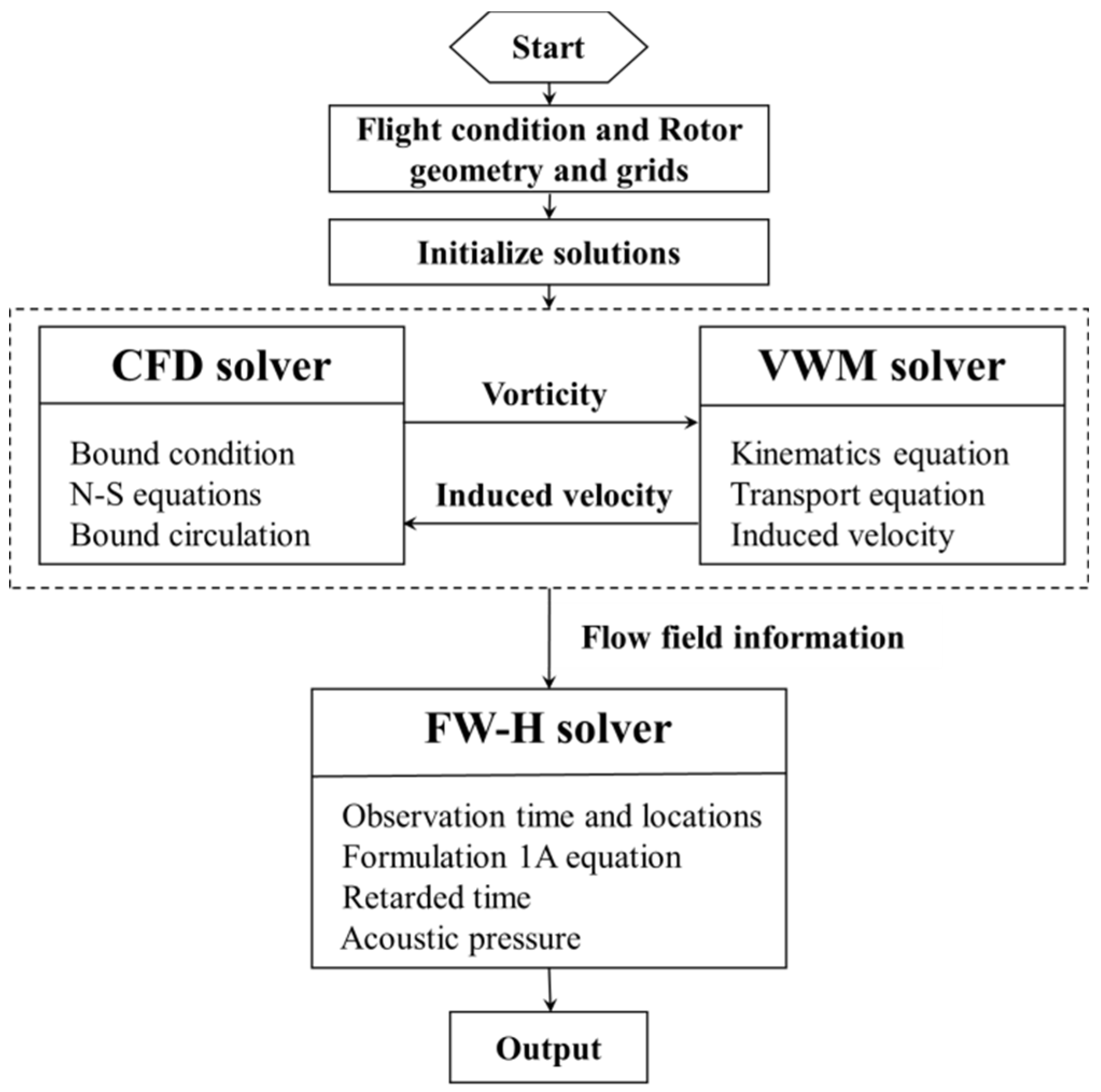
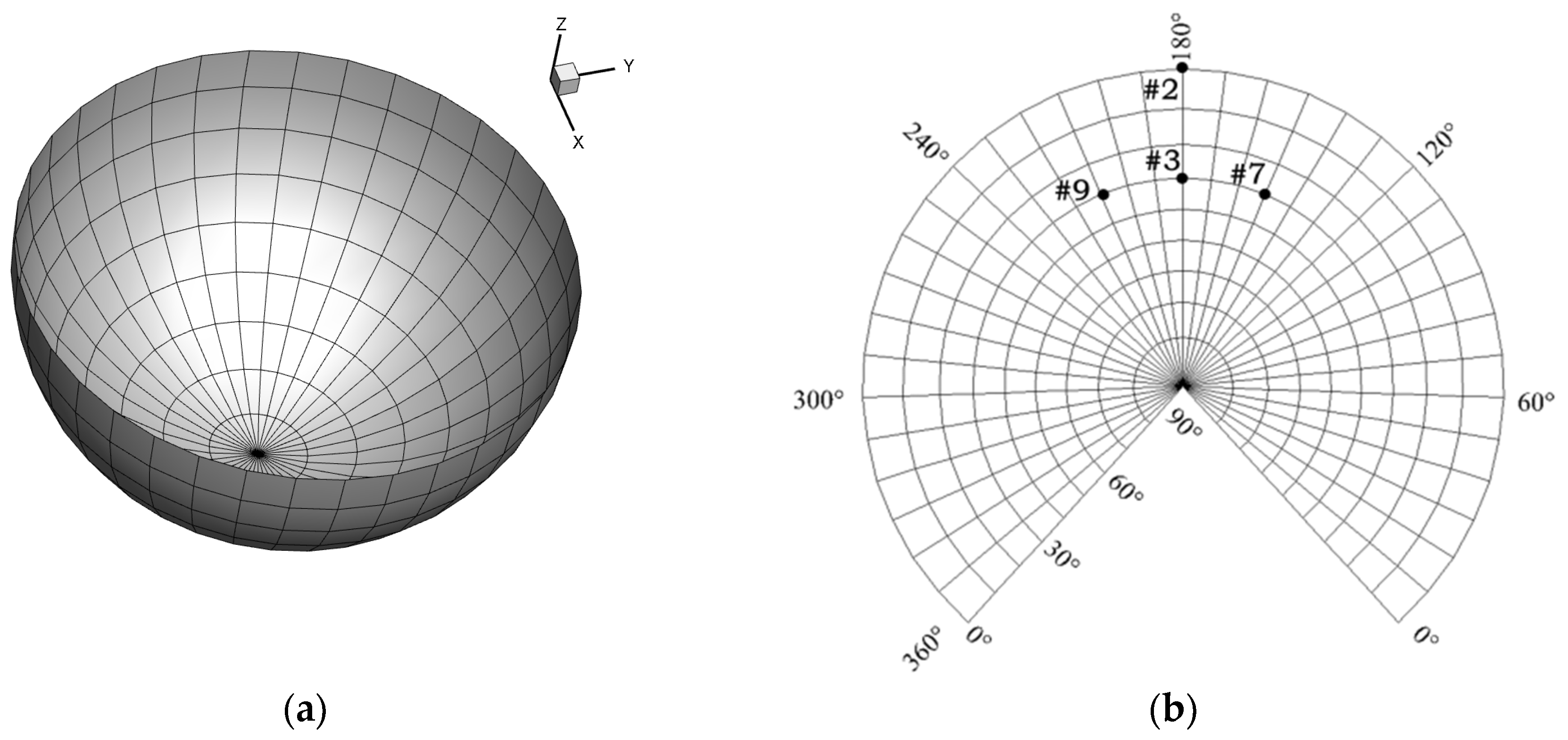
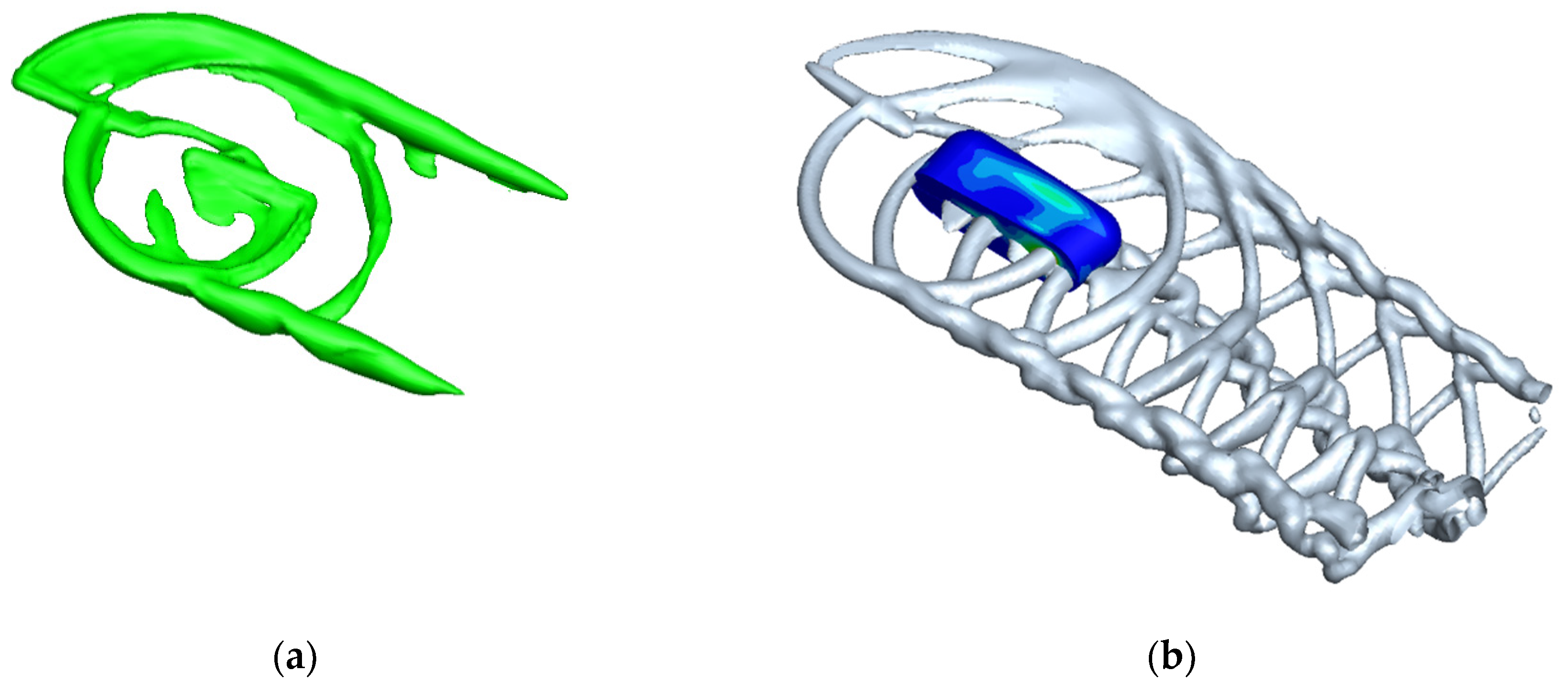
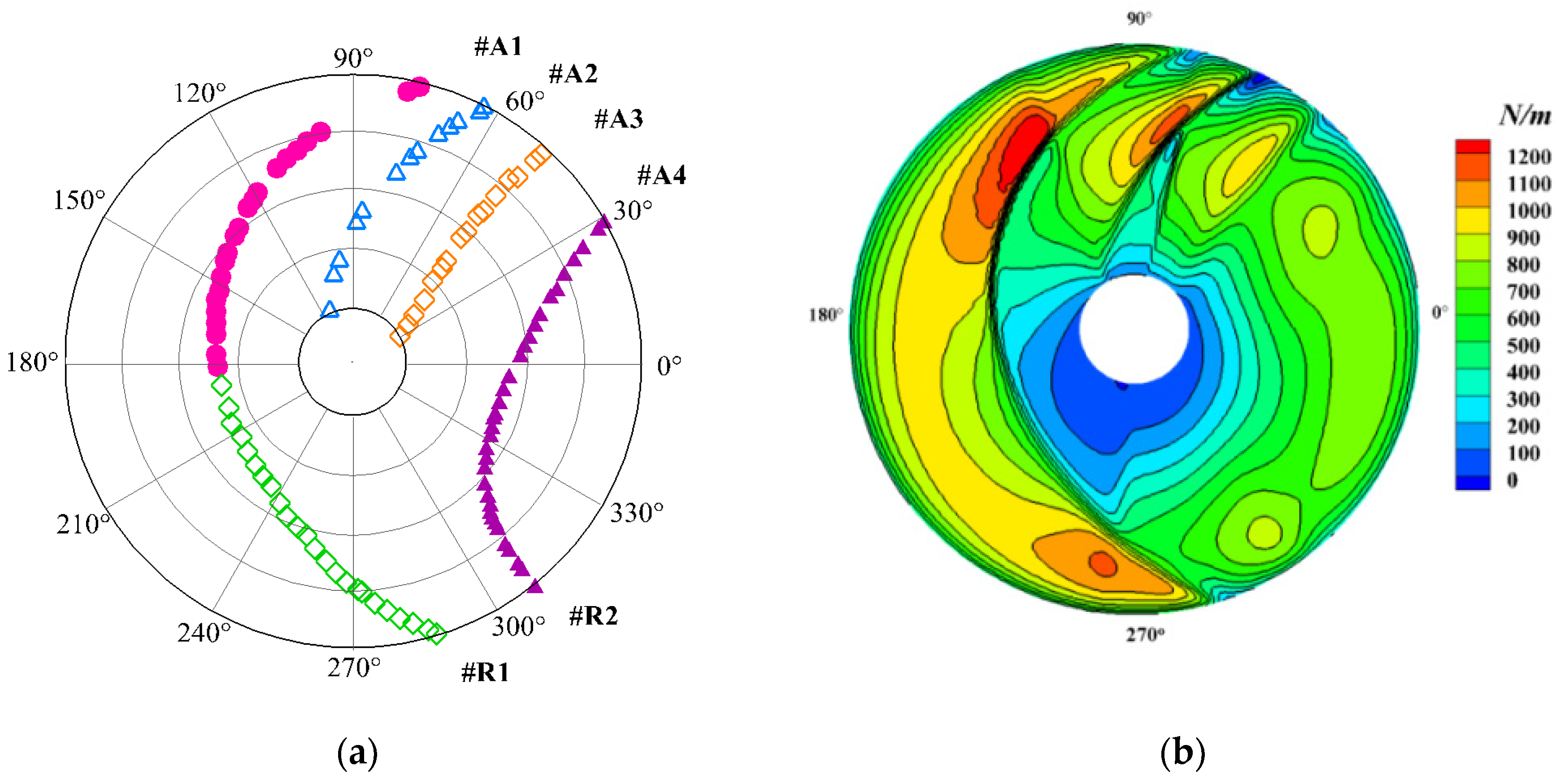
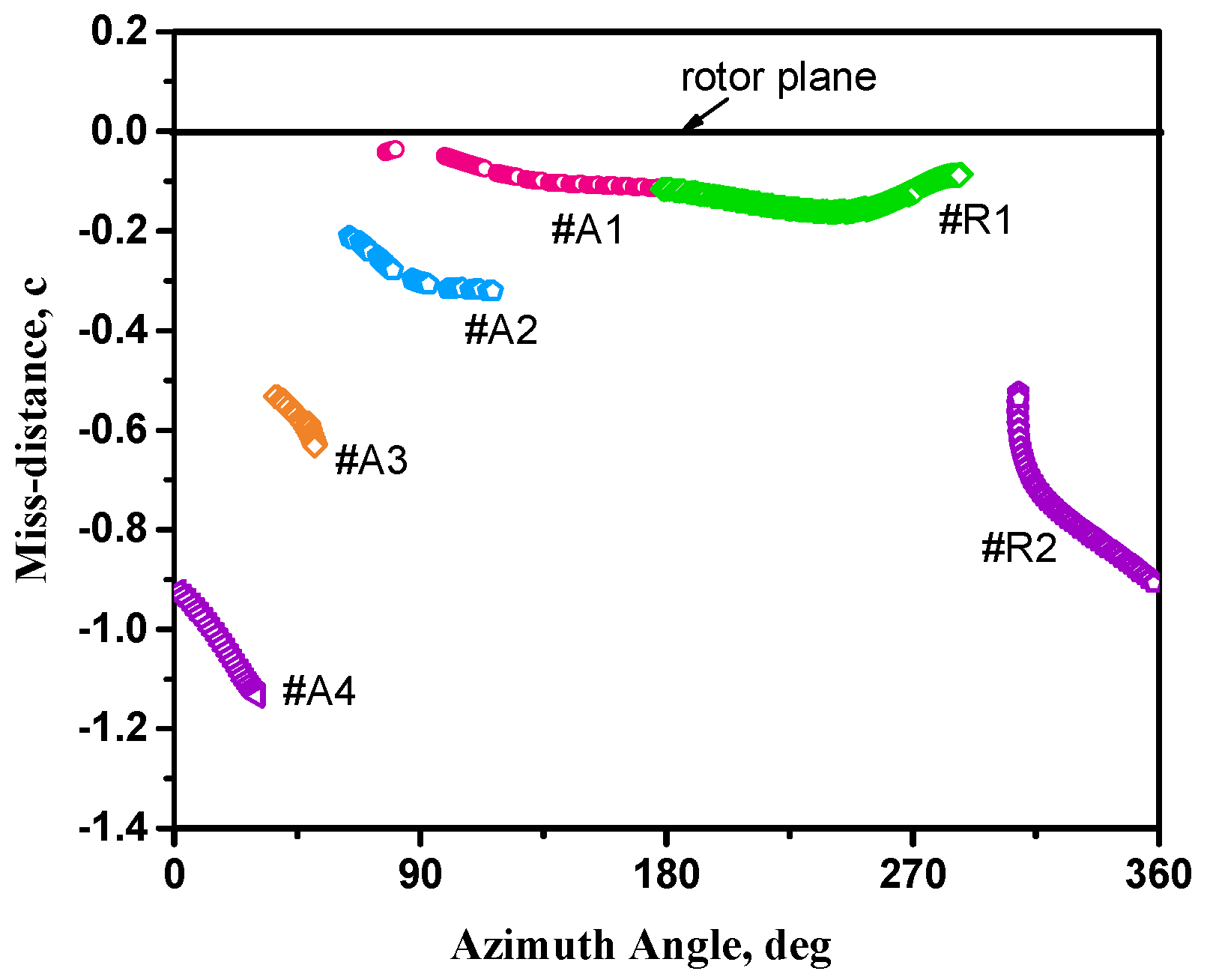
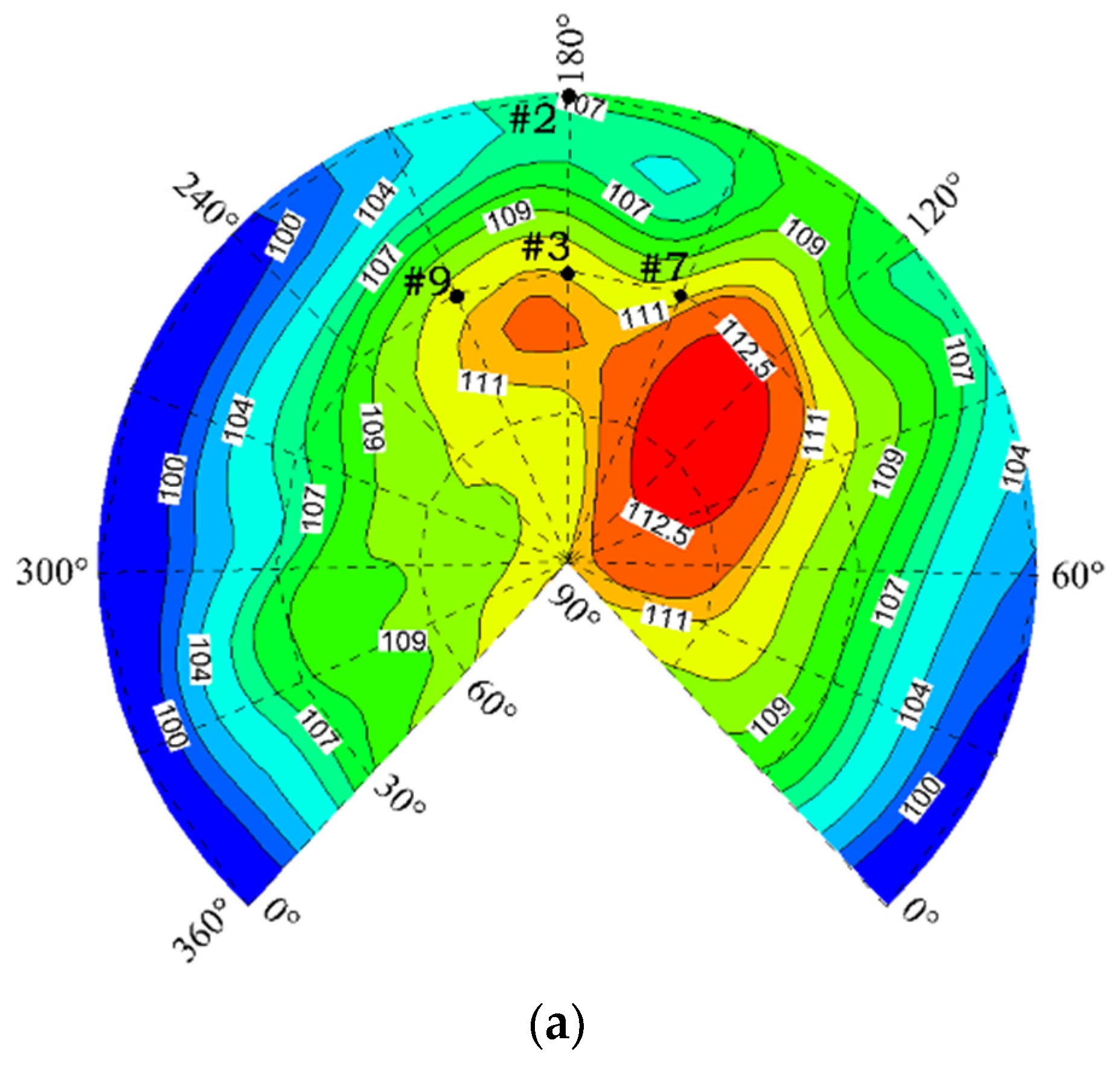
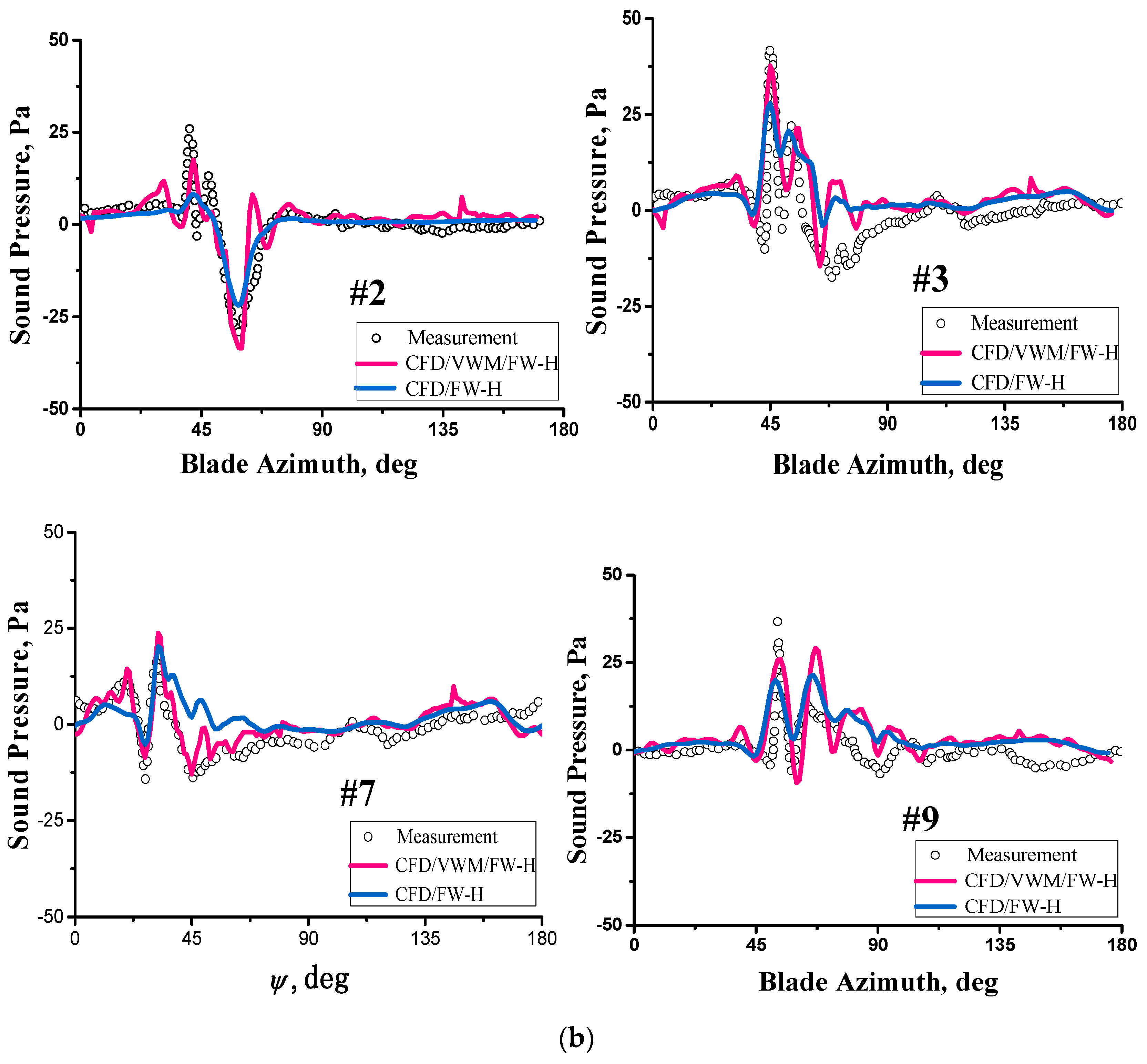

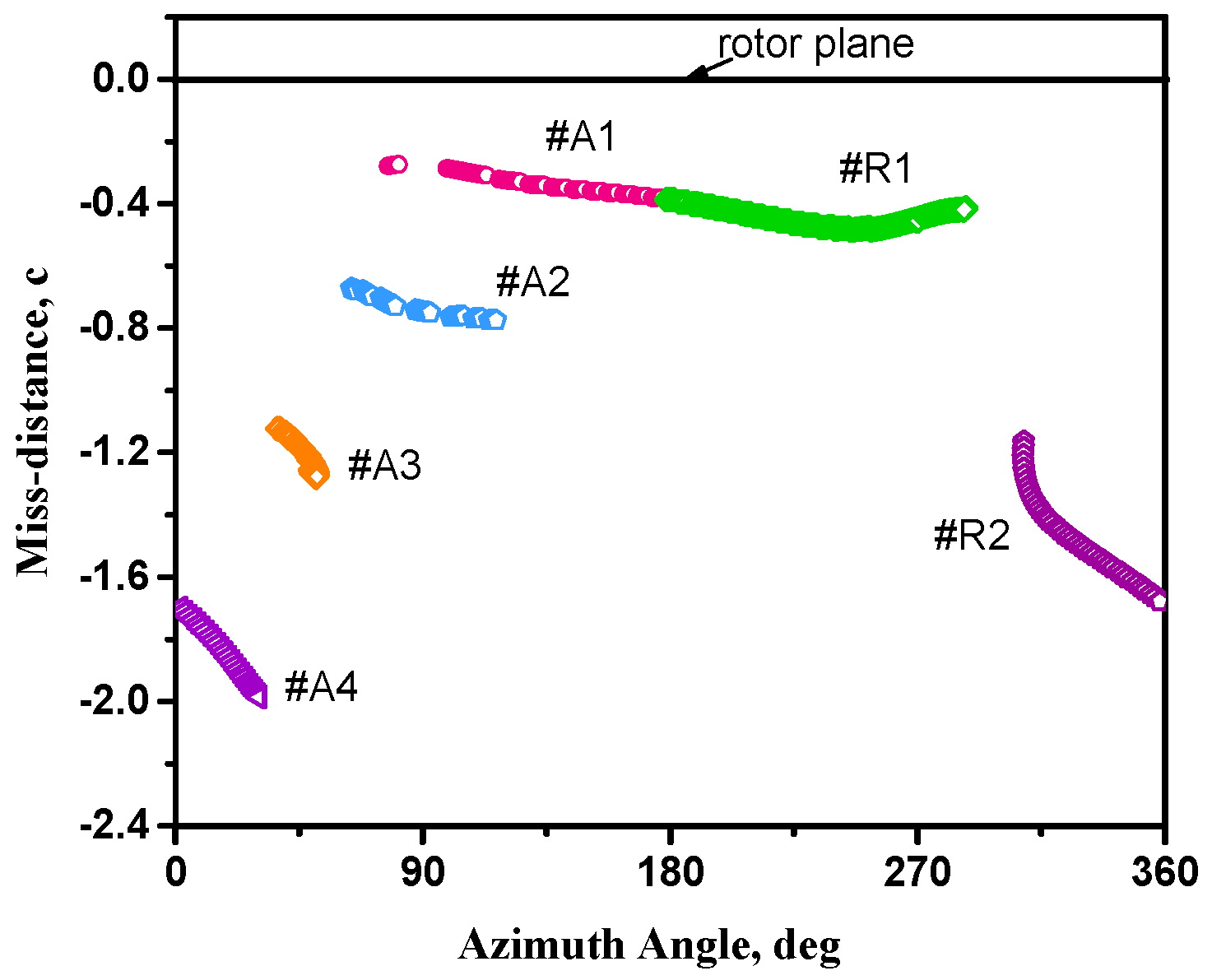


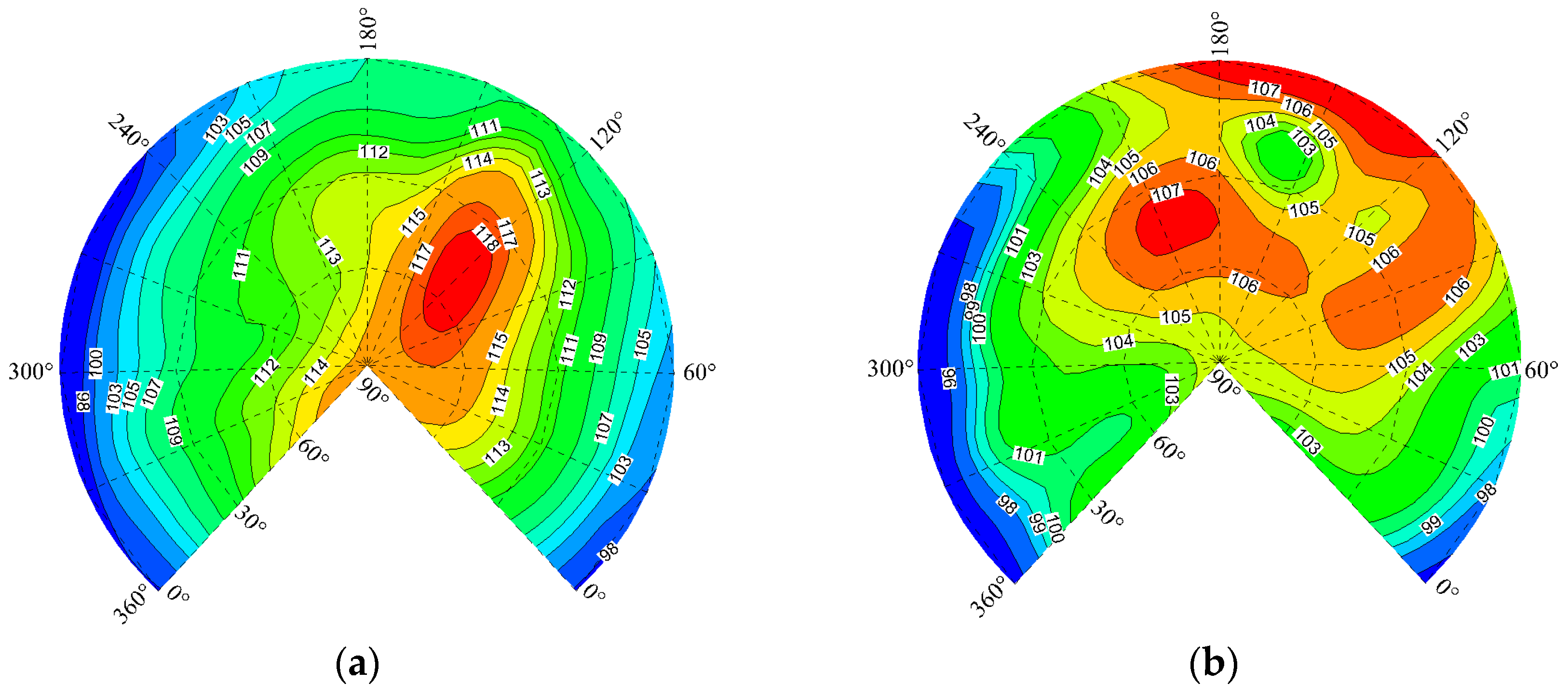
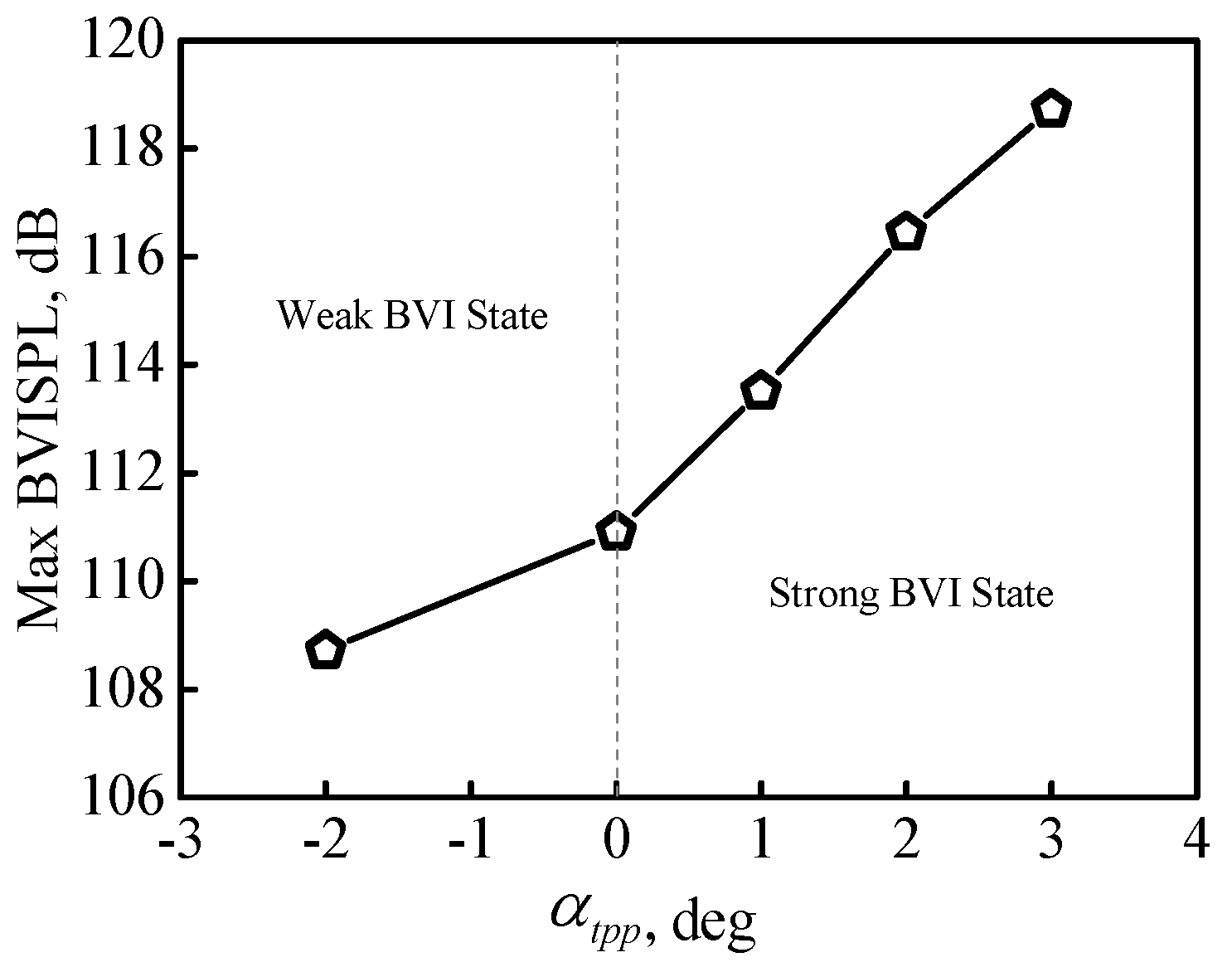


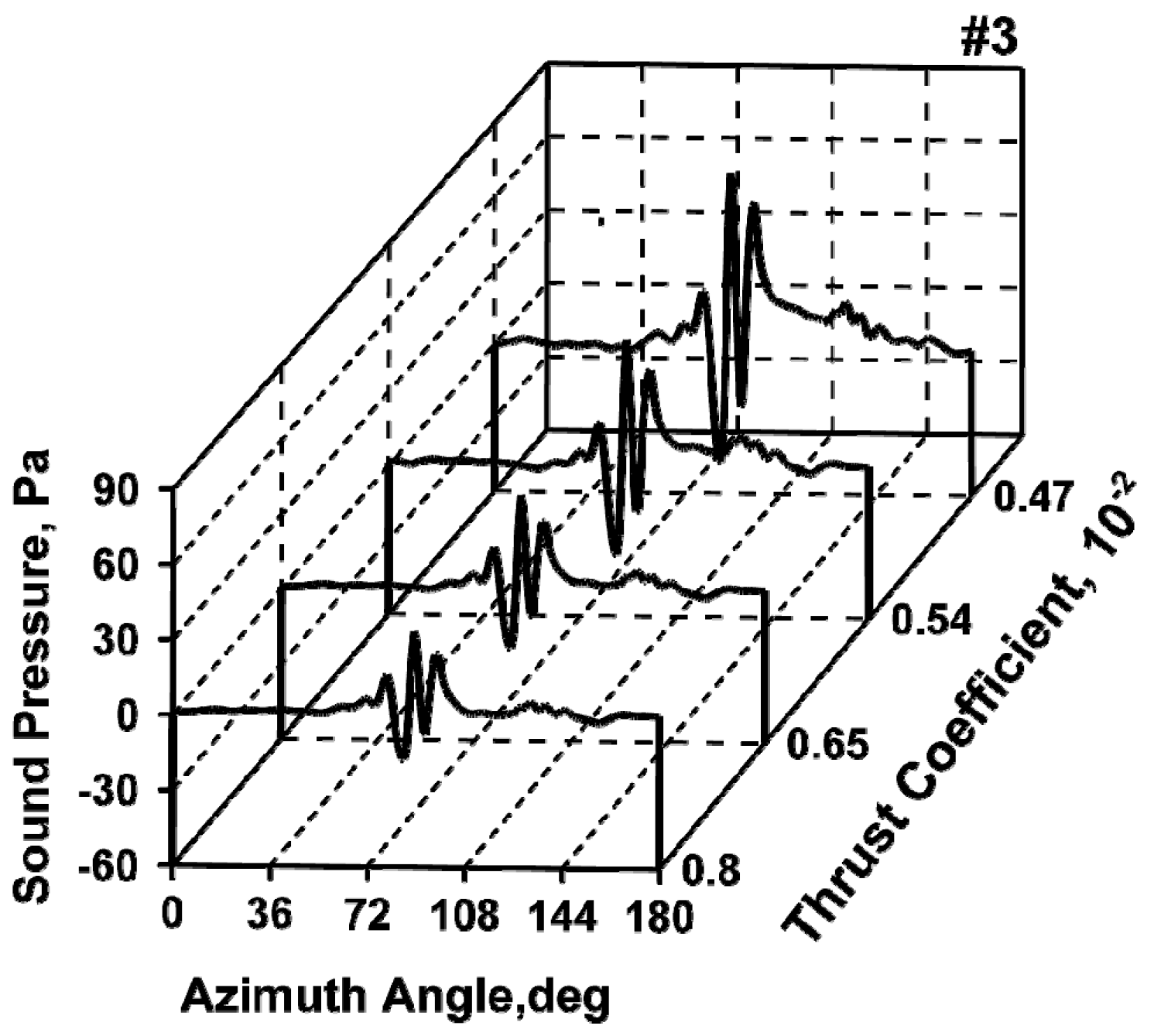



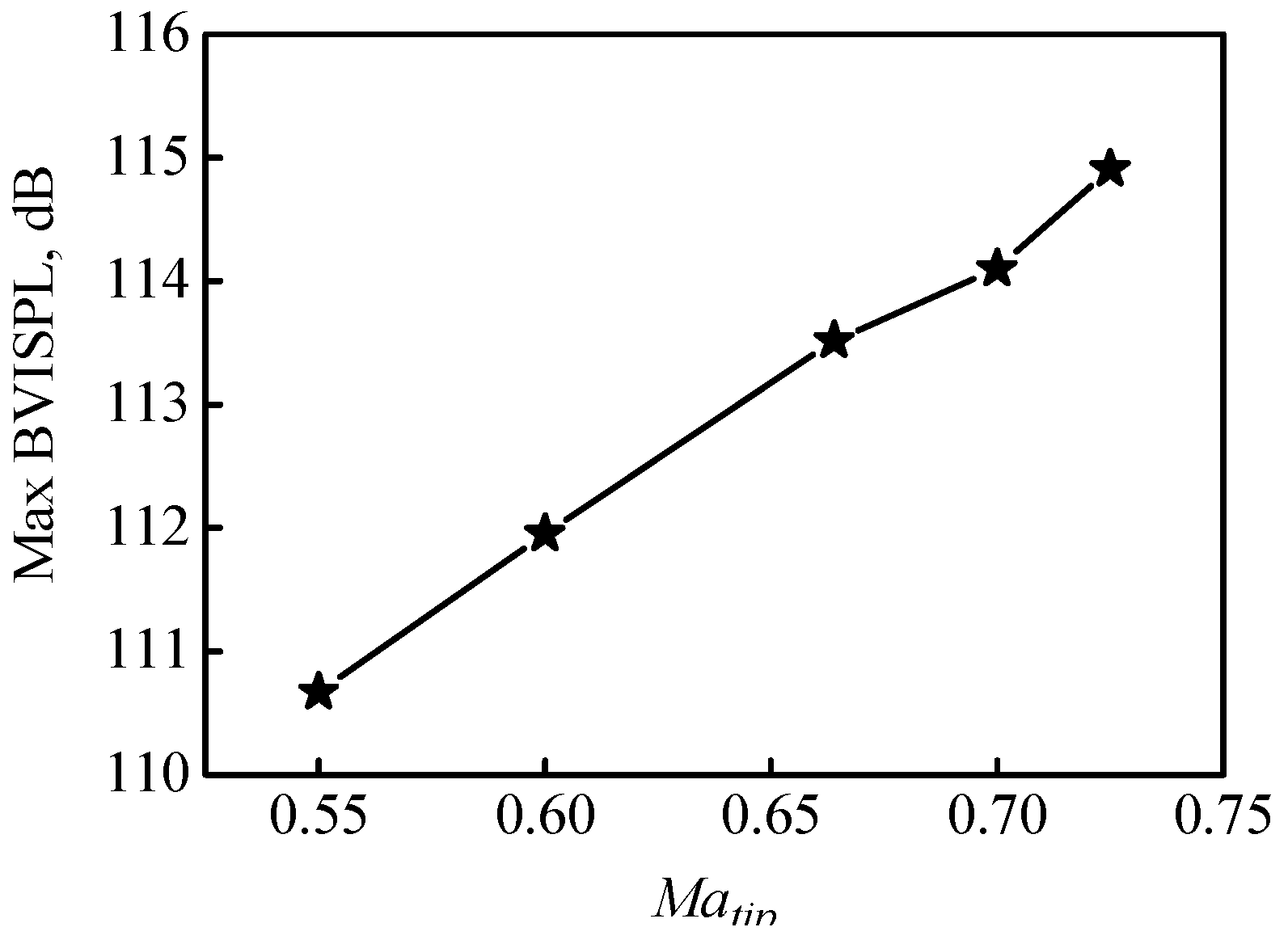




| Blade Motion | Blade Collective Pitch | Lateral Cyclic Pitch | Longitudinal Cyclic Pitch | Blade Coning Angle | Longitudinal Flapping Angle | Lateral Flapping Angle |
|---|---|---|---|---|---|---|
| Control Inputs | 6.14° | 0.9° | −1.39° | 0.5° | −1° | 0° |
| Numerical Condition | Blade Grid | Number of Blade Aerodynamic Segments | Number of Rotor Revolutions | Time Step Size | |
|---|---|---|---|---|---|
| CFD | VWM | ||||
| Set Values | CO type | 60 | 4 | 6 | 2° |
| Method | CFD/FW-H Method (Unsteady Solution) | CFD/VWM/FW-H |
|---|---|---|
| Blade grid | ||
| Background grid/particle number | 9,175,040 | 24,439 |
| Total Time | 148 h | 21 h |
© 2017 by the authors. Licensee MDPI, Basel, Switzerland. This article is an open access article distributed under the terms and conditions of the Creative Commons Attribution (CC BY) license (http://creativecommons.org/licenses/by/4.0/).
Share and Cite
Zhao, Y.; Shi, Y.; Xu, G. Helicopter Blade-Vortex Interaction Airload and Noise Prediction Using Coupling CFD/VWM Method. Appl. Sci. 2017, 7, 381. https://doi.org/10.3390/app7040381
Zhao Y, Shi Y, Xu G. Helicopter Blade-Vortex Interaction Airload and Noise Prediction Using Coupling CFD/VWM Method. Applied Sciences. 2017; 7(4):381. https://doi.org/10.3390/app7040381
Chicago/Turabian StyleZhao, Yinyu, Yongjie Shi, and Guohua Xu. 2017. "Helicopter Blade-Vortex Interaction Airload and Noise Prediction Using Coupling CFD/VWM Method" Applied Sciences 7, no. 4: 381. https://doi.org/10.3390/app7040381




